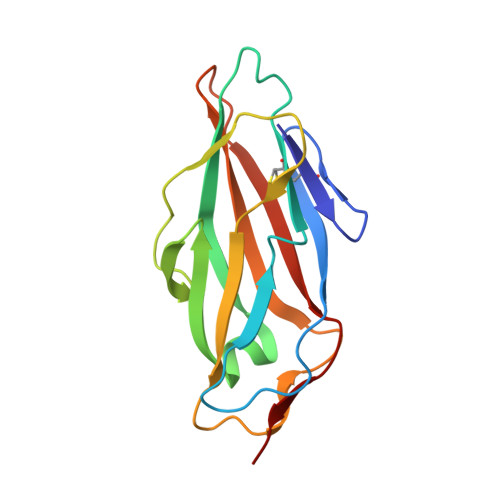Validation of Reactivity Descriptors to Assess the Aromatic Stacking within the Tyrosine Gate of Fimh
Roos, G., Wellens, A., Touaibia, M., Yamakawa, N., Geerlings, P., Roy, R., Wyns, L., Bouckaert, J.(2013) ACS Med Chem Lett 4: 1085
- PubMed: 24900609
- DOI: https://doi.org/10.1021/ml400269v
- Primary Citation of Related Structures:
4ATT, 4AUJ, 4BUQ - PubMed Abstract:
Antagonists of the FimH adhesin, a protein almost universally present at the extremity of type-1 fimbriae expressed by Escherichia coli, have been abundantly in the spotlight as alternative treatments of urinary tract infections. The antagonists function as bacterial antiadhesives through highly specific α-d-mannose binding in a charged and polar pocket at the tip of the FimH lectin domain and by the stacking of alkyl or aromatic moieties substituted on the mannose with two tyrosine residues (Tyr48 and Tyr137) at the entrance of the mannose-binding pocket. Using high-resolution crystal data, interaction energies are calculated for the different observed aromatic stacking modes between the tyrosines and the antagonist. The dispersion component of the interaction energy correlates with the observed electron density. The quantum chemical reactivity descriptors local hardness and polarizability were successfully validated as prediction tools for ligand affinity in the tyrosine gate of FimH and therefore have potential for rapid drug screening.
- General Chemistry, Vrije Universiteit Brussel, Structural Biology Brussels, VIB and Vrije Universiteit Brussel, and Brussels Center for Redox Biology, Pleinlaan 2, 1050 Brussels, Belgium ; General Chemistry, Vrije Universiteit Brussel, Structural Biology Brussels, VIB and Vrije Universiteit Brussel, and Brussels Center for Redox Biology, Pleinlaan 2, 1050 Brussels, Belgium ; General Chemistry, Vrije Universiteit Brussel, Structural Biology Brussels, VIB and Vrije Universiteit Brussel, and Brussels Center for Redox Biology, Pleinlaan 2, 1050 Brussels, Belgium.
Organizational Affiliation:

















